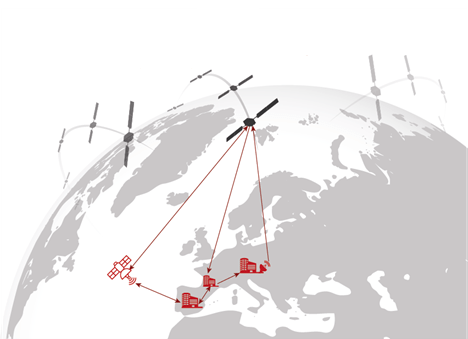GMV defines late collision avoidance commanding through the Galileo system

GMV, as part of the consortium led by Astroscale UK, has been awarded with a new activity within the ESA’s CREAM (Collision Risk and Automated Mitigation) cornerstone, as an extension to the CREAM#2 activity, to advance in an alternative commanding path for late collision avoidance manoeuvres (CAM) making use of the Galileo Return Link Service.
The increasing space traffic congestion in low earth orbits has also increased the number of collision avoidance manoeuvres. They represent a very relevant cost in terms of operations effort and propellant, reducing the operational lifetime, and affecting the nominal mission of the satellite. As a result, satellite operators wait as long as possible to command the avoidance manoeuvre in order to reassess the risk and to avoid unnecessary ones. This commanding requires communication with the satellite, which is typically only available few times per day in LEO, when the satellite passes over the ground stations. This represents an important limitation for the satellite operator which can only wait until few hours before the encounter using the last passes available. The new developments proposed target to mitigate this limitation by providing alternative late commanding paths to trigger the manoeuvre much closer to the conjunction, allowing a net reduction on the number of collision manoeuvres required, and therefore, reducing the propellant consumption and increasing the operational lifetime of the satellites.
This is achieved by using of the Galileo Signal-in-Space (SiS) and its Return Link Service as an alternative continuous communication path to relay collision avoidance manoeuvre decisions to satellites mounting on-board Galileo compatible GNSS receivers. This solution presents a very innovative usage of Galileo (potentially in combination with SST services like the EU SST) that could be translated in the future into a unique collision avoidance service to be provided worldwide.